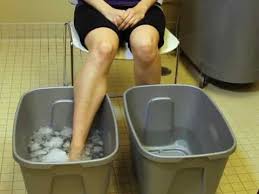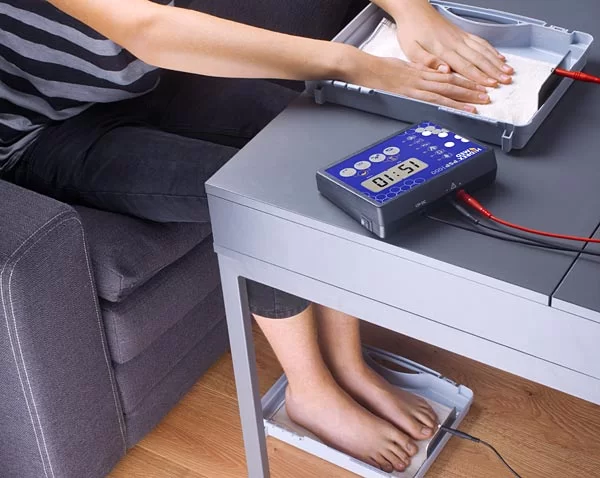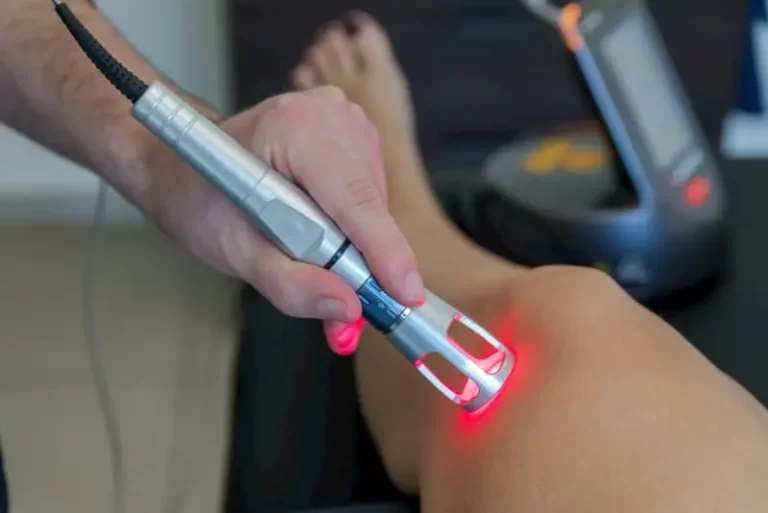CONTRAST BATH USE IN PHYSIOTHERAPY
Table of Contents
DEFINATION:
Contrast bath therapy is a physical therapy treatment in which all or part of the body is immersed first in hot water, then in ice water, and then the procedure of alternating hot and cold is repeated several times. The contrast bath can help improve circulation around your injured tissue.
This is one of many whirlpool treatments physical therapists use to help decrease pain and muscle spasms, increase range of motion and strength, and improve functional mobility.
GOALS OF TREATMENT
If your physical therapist chooses to use a contrast bath for the treatment of your injury, the goals of treatment will most likely include:
1) Decreased pain
2) Decreased swelling
3) Controlled inflammation
4) Improved mobility
Be sure to ask your physical therapist the specific goals that are to be achieved by using the contrast bath so you know what to expect.
The common site mostly Contrast Bath Treatment are:
Contrast bath therapy may be used on your distal body parts such as:
- Hands
- Wrists
- Forearms
- Elbows
- Feet
- Knees
- Ankle
- Lower legs
INJURIES TREATED WITH CONTRAST BATH
Injuries that benefit from contrast bath treatments are those that cause swelling and pain around soft tissue and the joints of the body. These injuries include,
but are not limited to:
1) Ankle and leg fractures
2) Plantar fasciitis
4) Upper extremity fractures
5) Hand and finger arthritis
HOW CONTRAST BATH THERAPY IS ADMINISTRATED?
- To perform a contrast bath, you need two whirlpool tubs. One tub should be filled with warm water, and one tub with cold. The warm tub should be between 98-110 degrees Fahrenheit, and the cold tub should be 50-60 degrees Fahrenheit.
- Some physical therapy clinics will have only one tub, so they’ll use the tub (typically for the warm water) and a bucket (for cold) instead.
- Once both tubs are the correct temperature, you’ll be instructed to place your injured body part in the warm whirlpool, where it should stay for 3-4 minutes. You may be asked to perform gentle motion exercises during that time.
- You’ll then quickly move the part being treated to the cold tub or bucket. Be prepared; the change from warm to cold can be pretty intense.
- Typically, you’ll stay in the cold water for about one minute.3 If you can’t tolerate the cold for that long, let your physical therapist know. They’ll probably have you go back to the warm water.
- This sequence of moving from warm to cold and back again is generally repeated for 20-30 minutes. Be sure your physical therapist monitors the temperature of the water as you are going through treatment. Often, the temperature will need to be adjusted by adding more ice or warm water to the respective baths to maintain the appropriate temperatures.
- After treatment, your physical therapist should assess your injury to see if the treatment achieved the desired effect.
- You’ll likely be engaged in active exercises and functional mobility after the contrast bath treatment. Most research indicates that active involvement in physical therapy produces the best outcomes.
- Contrast bath therapy (also known as hot/cold immersion) is the process of lowering the affected tendon into a bucket or bath of ice water, then followed by an immersion into warm water. This alternation of hot and cold has been practiced for centuries to decrease pain and increase the circulation to the injured area or
areas that receive little amounts of blood flow. - Contrast baths have been known to flush away toxins and other waste product that has built up inside the tissue and bring oxygen and other beneficial nutrients to that area. This is a huge benefit to the healing process. The greater the difference in hot or cold, the greater the effect is to the injured area.
- To do the contrast bath method, you will need two tubs or large buckets (a double sink in the kitchen can also work well). Fill one tub with hot water and one with cold. The idea is to soak the affected area in the hot water for around 3 minutes, then switch to the cold water, soaking for only one minute. You should always start with the hot water and end with the cold water.
- Use caution when adjusting the temperature and make sure it is to your personal comfortability. Some sufferers of AT might think they can achieve faster results by using extreme temperature changes, however this can not only be dangerous, but may affect your AT in negative ways. An alternative method is to use heating pads or warm wet towels then switch to an ice pack. This method can provide similar results as the hot/cold water.
HOW TO CONTRAST BATH WORK?
The theory behind the use of contrast baths in physical therapy is that the rapid change from warm to cold helps to quickly open up and close the tiny capillaries (blood vessels) in your body.4 Warmth causes these small arteries to open, while cold causes them to close.
This rapid opening and closing of blood vessels near the site of your injury create a pumping action that’s thought to help decrease swelling and inflammation around injuries. Decreasing the swelling and inflammation helps alleviate pain and improve mobility.
RISK OF CONTRAST BATH THERAPY
Contrast baths carry no risk when performed correctly. The main risks are:
- Burns from water that is too hot
2. Skin damage from water that is too cold
3. Ensuring that the water you use for contrast baths is the correct temperature is the best way to mitigate these risks.
It is important that contrast bath therapy is done in clean, uncontaminated water. Contaminated water could cause a risk of infections. The patient who is taking the treatment may be at higher risk of getting an infection. Enough precautions are necessary before starting the contrast bath.
The conclusion:
Contrast bath therapy is a series of brief, repeated immersions in Hot and Cold water.
Research supports the use of contrast hydrotherapy to relieve muscle fatigue, and soreness and to decrease pain, swelling, and lactic acid buildup after exercise.
You can start treatment with contrast hydrotherapy under the supervision of a trained Physiotherapist, or you can try it at home by dipping your injured body part into warm water for 1 to 3 minutes, then into cold water for 1 to 3 minutes, and repeating the process too many times.
There are some risks for people with certain conditions who have reduced sensation. Be sure to talk to your Physiotherapist before starting the contrast bath on your own.







